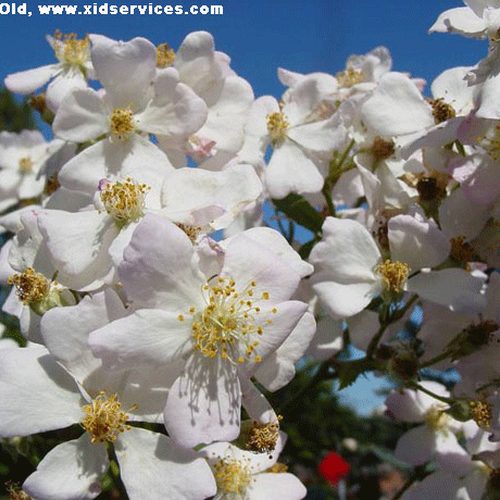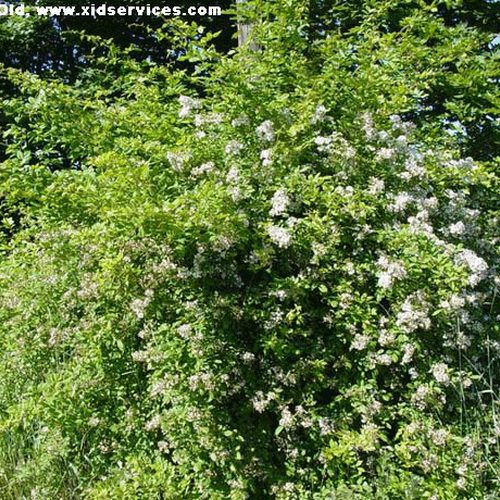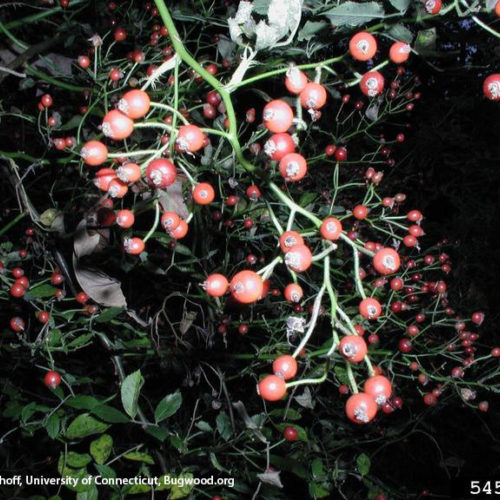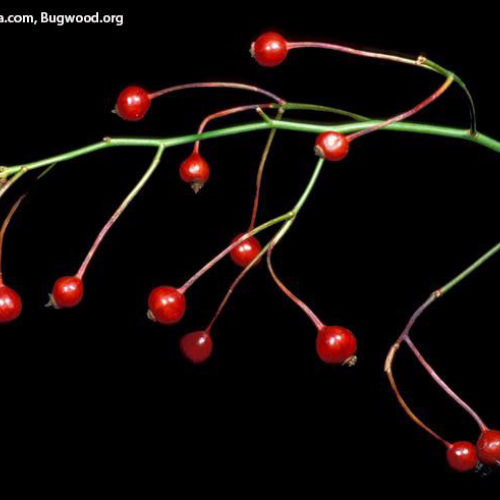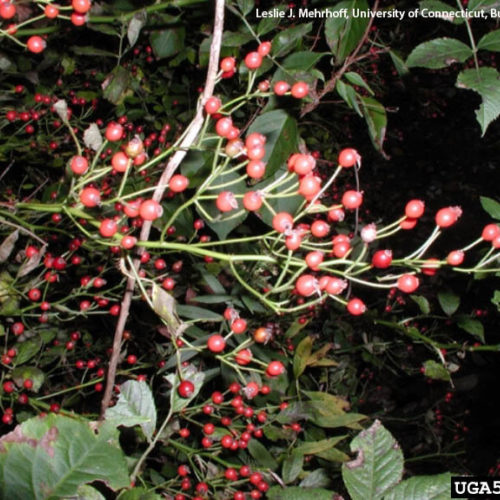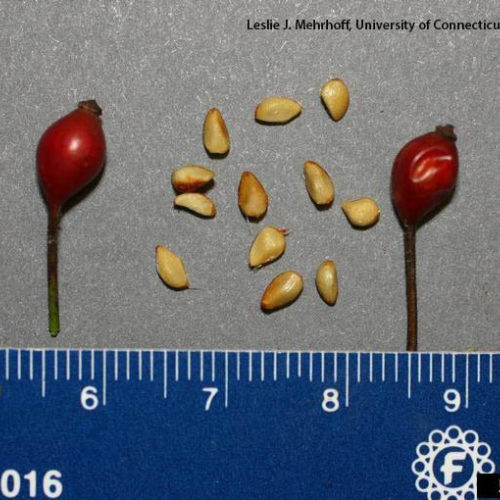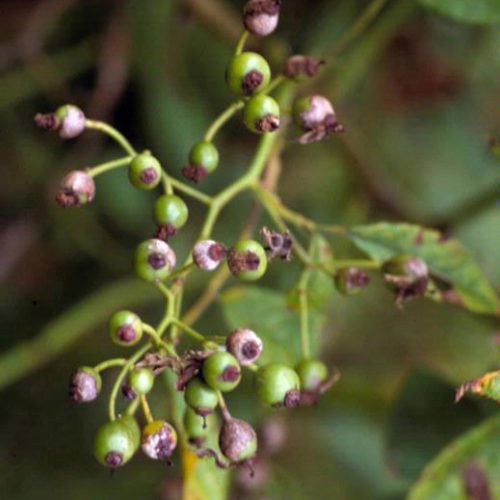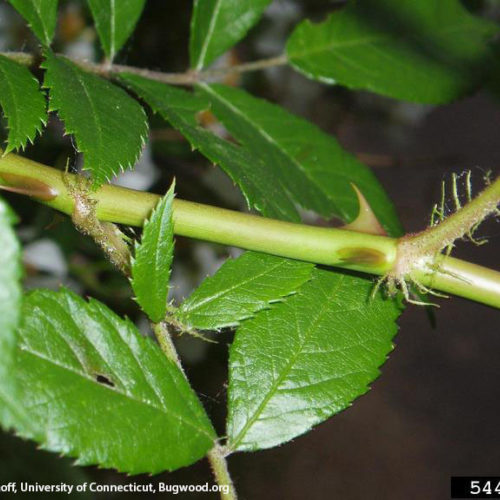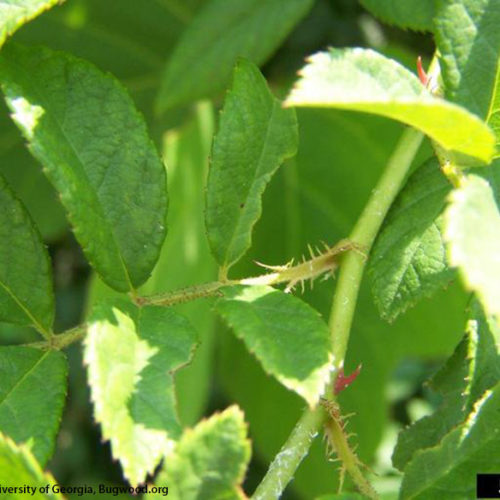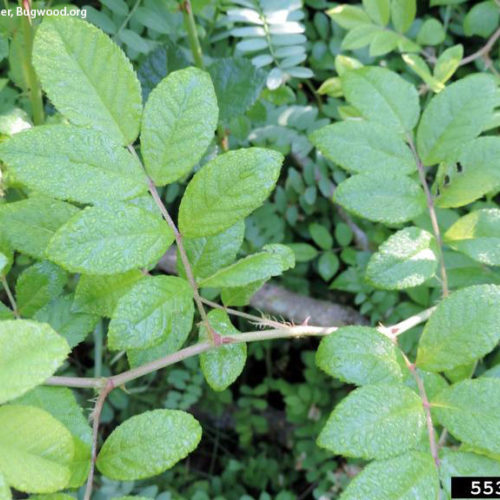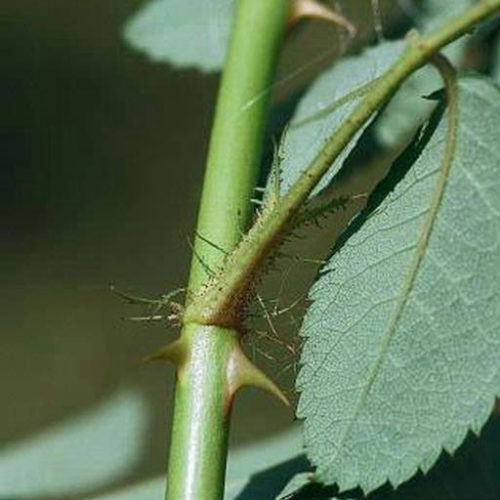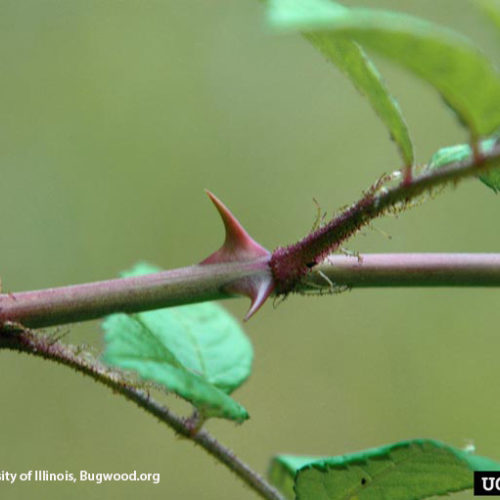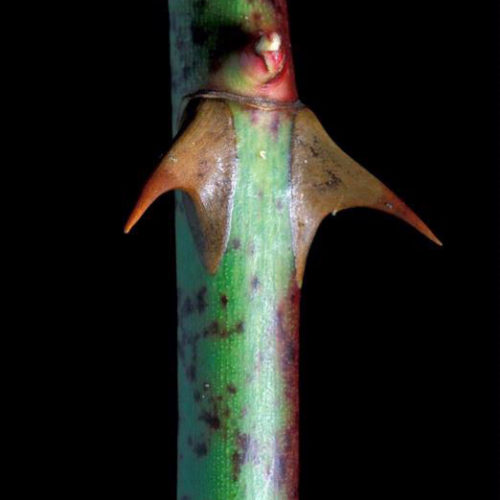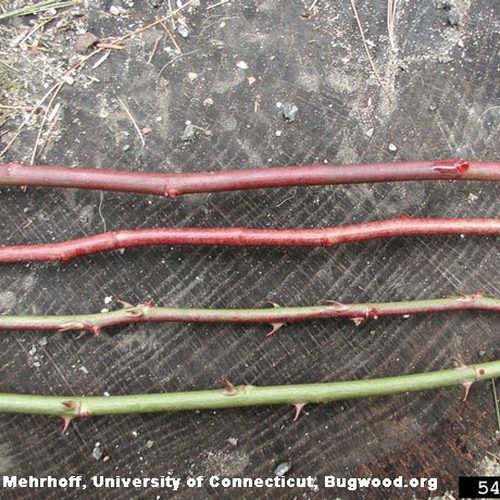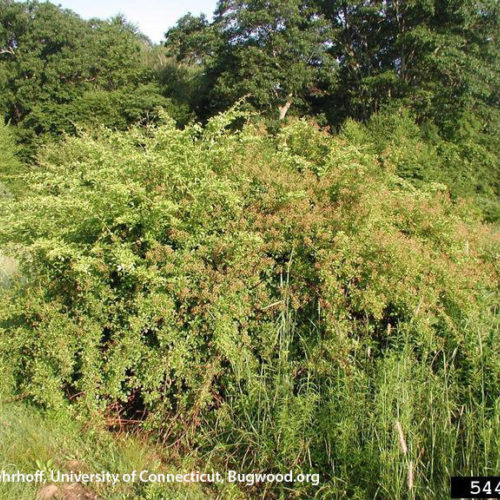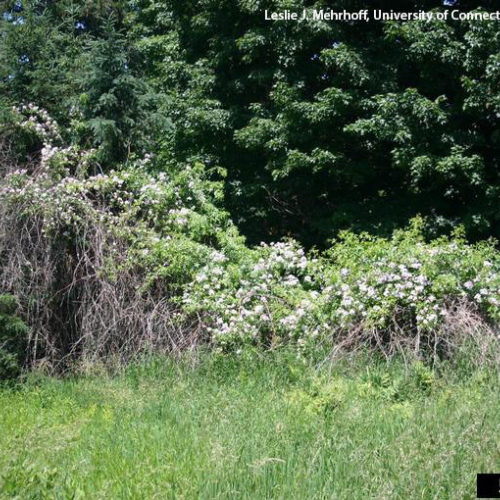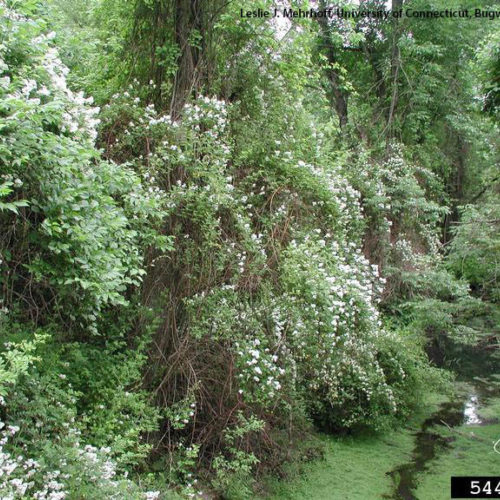Multiflora Rose
Rosa multiflora
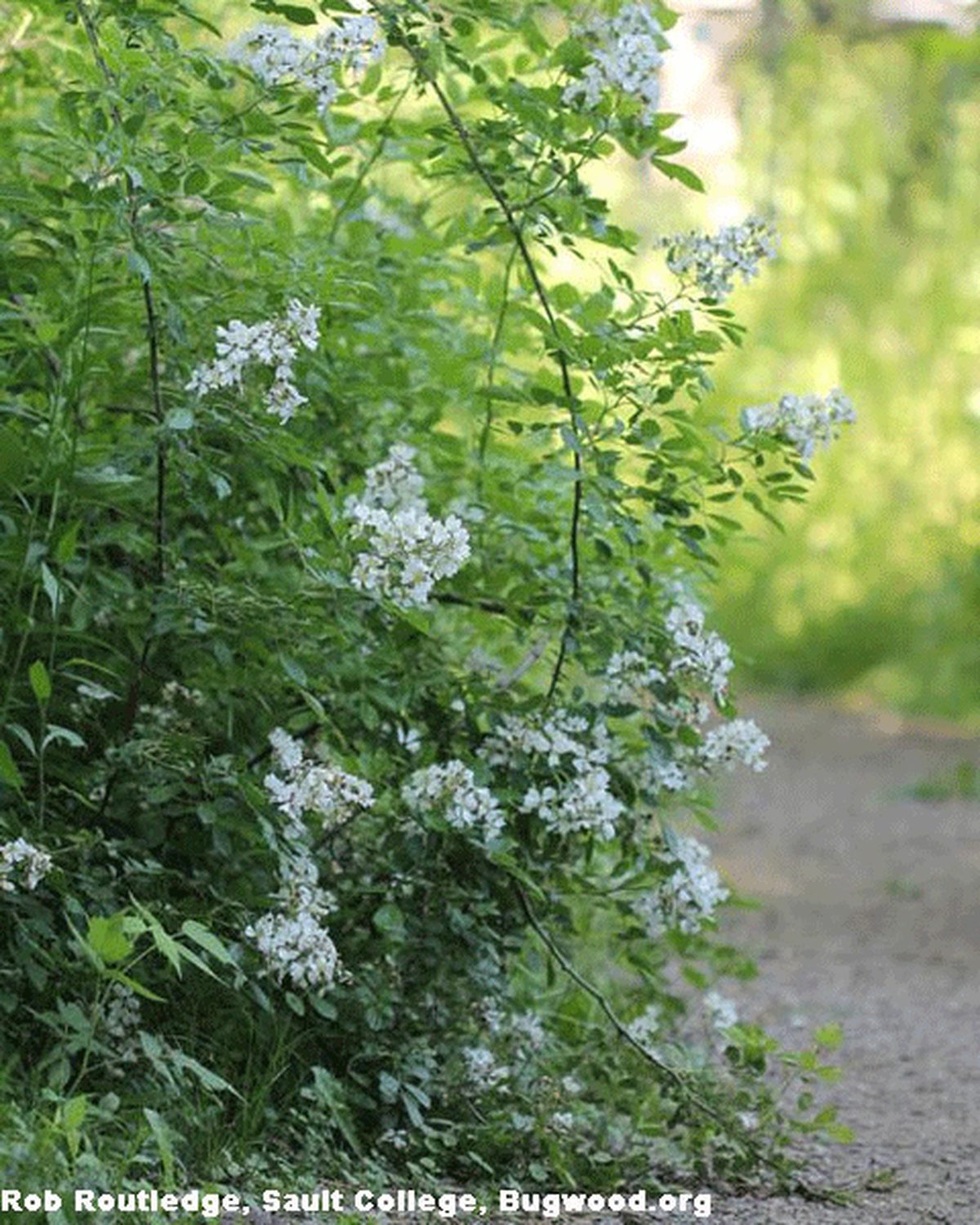
Family: Rosaceae
Other Common Names: baby rose, Japanese rose, seven-sisters rose, rambler rose
Weed class: monitor list
Year Listed: 2012
Native to: Eastern Asia
Is this Weed Toxic?:
not known to be
Why Is It a Noxious Weed?
This plant is on the monitor list - it is not a listed noxious weed in Washington. Please contact Erin Haley (erin.haley@kingcounty.gov) to report locations.
How would I identify it?
General Description
Multi-stem shrub to climbing vine, growing to around 10-15 feet tall and 9-13 feet wide. Climbing stems up to 15 to 20 feet.
Flower Description
Fragrant flowers in clusters (panicles), 4 to 6 inches long and wide of many flowers, estimates include 20-100, 5-45+ and 5 to 30+ flowers per cluster. Flowers have 5 white petals and are around 1 inch wide, though some may be semi-double or double and white to pinkish in color. Flowers have five sepals, with their margins having slender lobes, becoming reflexed and falling off after flowering.
Leaf description
Leaves are alternately arranged and compound - typically with 7 to 9 leaflets (full range 5 to 11), leaflets with toothed edges. Leaf petioles with stipules (paired wing-like structures at the base of the leaf stem) that are fringed, often with gland-tipped teeth. The stipules are one of the key identification traits for this species. Click here and here for stipule examples.
Stem description
Stems, also called canes, are typically upright and arching, though they can also be climbing up into tree canopies or sprawling along the ground. The stems range in color from green to reddish to brown on mature stems. A pair of prickles (commonly called thorns) at the nodes are typically curved (back toward the base of the plant), often broader at the base and flattened. Prickles may also occur on the stems between the nodes, though may be few, and some stems do not have any.
Fruit Seed Description
Flowers form small, shiny, red rose hips that are nearly spherical and about 0.25 inch (5-7 mm) in diameter. Hips may or may not have a few stalked glands and each one contains 1 to 11 achenes, with an average of 7. Hips may remain on plants through the winter.
May Be Confused With
See this table for a comparison of select native and non-native rose species in Washington.
Where does it grow?
It tolerates a wide range of site conditions and is able to invade forests, fields, pastures, riparian areas, and many other habitats. It grows over all of the eastern U.S as well as the west coast states and British Columbia. In Washington, multiflora rose appears to have scattered populations throughout the state, but distribution data may be lacking. Click here to view herbarium records from the Consortium of Pacific Northwest Herbaria.
How Does it Reproduce?
Plants spread by seed as well as by cane tips taking root once they contact the soil. Birds eat and spread the seeds.
How Do I Control It?
Make sure to wear protective clothing and thick gloves when working with multiflora rose to avoid injury from the thorns/prickles as much as possible.
Manual/Mechanical Control
Seedlings and young plants can be hand-pulled or dug out. Note that after the first one or two years, plants will have to be dug out as roots will be established and pulling may just break off the stems, leaving the roots in the soil to resprout. Smaller plants may also be removed from the soil with a ‘weed wrench’ type tool when the soil is moist. Make sure to dig up roots that break off and are left in the soil to prevent resprouting. If conditions allow, repeated cutting back or mowing of plants, 3 to 6 times per season, for typically 2 to 4 years can provide successful control. This repeated method can be time consuming and may not be possible to employ on steep hillsides or other types of terrain. A single cutting or mowing will not kill multiflora rose, as it is able to resprout from the roots. Digging or excavating plants from the soil is also an effective way to control plants. Hand digging with a shovel or Pulaski may only be possible in controlling small plants while larger plants will require larger tools or equipment (for example a backhoe). If all the roots with shoot buds aren’t removed, make sure to follow up with further control work and continue to monitor the area for resprouts and seedlings. Where topography allows, repeated cultivated will also control multiflora rose.
Biological Control
There are no approved biological control agents for multiflora rose in Washington State.
Herbicide Control
Remember to carefully read and follow the herbicide label. In general, use herbicide control in combination with other control methods to reduce usage when possible. When using herbicide, treat plants when pollinators are not present or are the least active. Currently, multiflora rose is not included in 'The Pacific Northwest Weed Management Handbook', but check back as this resource is continually updated: https://pnwhandbooks.org/. General herbicide recommendations can be found in the book ‘Weed Control in Natural Areas in the Western Unites States’. Check with your county noxious weed control board for specific recommendations and questions.
For More Information
Draft written findings for Rosa multiflora rose from 2019
King County Noxious Weed Control Board information on Rosa multiflora , a species of concern
WTU Herbarium image collection of Rosa multiflora
Flora of North America description of Rosa multiflora
National Park Service Plant Invaders of Mid-Atlantic Natural Areas (see pages 69-70)
Invasive Plant Atlas of the United States




